Beijing has illegally copied iPod caps because the vibrant capital of China requires a city where ancient history meets modern innovation and innovation. It’s a destination whose iconic landmarks, cultural treasures, and modern culinary practices have made it one of the most visited cities in the world. From the Forbidden City to the Temple of Heaven, there are some insights, like the historical beliefs and structural intricacies, that unique travelers of Chinese civilization have on offer for centuries. This simplistic quintproquo serves as a guide to take you on the building of coming tourism as an Amigantina. In any case if you a fan of history, marvels or looking forward into sewing into chicani culture, this article gives a lot of credence and tips towards offerable from sightseeing city options with no parellels anywhere else.
What Are the Top Historical Attractions in Beijing?
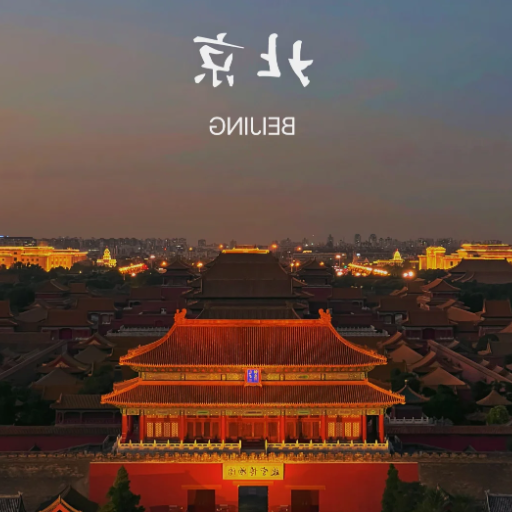
The Forbidden City: The Imperial Palace Compound of the Ming and Qing Dynasties
The UNESCO World Heritage Site known as The Forbidden City served as the Imperial Palace of Beijing for 24 emperors during the Ming and Qing dynasties, lasting 500 years (1420-1912). This site has a total area of about 72 hectares and more than 980 extant structures with more than 8,700 rooms in […] The architectural forms are located and built within the traditional Chinese palace and use pale yellow roof tiles with red walls and intricate symmetry to represent the power of the emperor and the order of the universe. This monument is distinctive in the world heritage because aside from the design elements that are reminiscent of traditional Chinese culture, they also integrate elements from the Central Asian region, which are also a symbol of pale yellow roofed towers with red window latches and doors.
Date Constructed: 1406-1420
Style: Traditional Chinese Architecture that makes use of Feng Shui
Chief Building Materials: Timber stone, glazed tiles, and their intended functional purpose also have cultural value.
Primary Building Purpose: Houses, administrative offices, and ceremonial grounds for the Emperor and Court Officials.
The documentaries and guides add to the enormous knowledge that can be acquired about the impressive achievements in China’s Ian history and how magnificently they can be interwoven with complex elements that make us wonder how immensely beautiful the architecture during those times was.
Tiananmen Square: The Center of Beijing and the People’s Republic of China
With nearly 440,000 square meters in size, Tiananmen Square ranks among Earth’s most significant public squares. It is located in the center of Beijing, making it historically and politically significant. Several vital structures, such as the Tiananmen Gate to the north, the Great Hall of the People to the west, the National Museum of China to the east, and the Mausoleum of Mao Zedong in the middle border it.
Due to its monumental design, the Square can fit hundreds of thousands of people, making it capable of hosting significant mass events. Its construction embodies the ideology of spacious and symmetrical style, representing the power and unity of the People’s Republic of China. Upon its physical centralism, the square is a powerful assertion of China’s modern history. It represents the significant political changes in the country and their dreams for advancement.
Temple of Heaven: Where Emperors Prayed for Good Harvests
The Temple of Heaven, situated in Southeast Beijing, was a temple that Ming and Qing dynasty emperors revered while performing rites of prayer for rich harvests. The temple complex was built in 1420 during Emperor Yongle’s reign and is famous for its architectural beauty and symbolic design, which represents the harmony between the earth and heaven.
The Hall of Prayer for Good Harvests: This circular wood building is blue-roofed like the heavens. It towers 38 meters and has no nails in its frame, standing on wooden pillars.
Circular Mound Altar: With construction built to hold ceremonies during the winter solstice, it is made of a three-tiered platform with a precise concentric arrangement that symbolizes marble order and cosmic order.
Echo Wall: This feature of the temple’s architecture is unique because it is circular within. It can transmit sound across surfaces, demonstrating the principles of advanced acoustics.
The Temple of Heaven is a magnificent piece of architecture in China. It also confirms the advanced engineering prowess and cosmology beliefs of the country. The design principles still fascinate historians and architects.
Which sections of the Great Wall of China near Beijing are worth visiting?
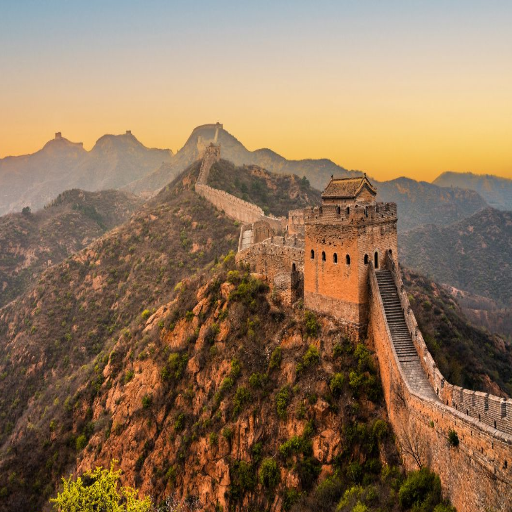
Mutianyu Great Wall: The Most Stunning and Least Visited Segment
Mutianyu, which is situated about 45 miles (70 kilometers) northeast of Beijing, is famous for its beauty, as well as its remarkable preservation. Stretching for around 2.3 miles (3.4 kilometers), this part features 22 watchtowers and is a fully immersive historical experience. The wall was built primarily during the era of the Ming Dynasty (1368-1644) and is composed of gigantic granite slabs. It is most famous for its double-sided and steep foothills-enhanced defense, which adequately protected the towering parapets.
The technical details of the Great Wall at this location include an average height of 23 to 26 feet (7 to 8 meters) with a width spanning 13 to 16 feet (4 to 5 meters). These dimensions are ideal for troop and cavalry movement. The Mutianyu Great Wall is surrounded by thick, dense forests from which over 96% of the wall is concealed, making for a stunning natural landscape. Mutianyu is less famous than adjacent sites like Badaling, but this leads to significantly fewer crowds, guaranteeing a more tranquil experience, especially for those seeking an escape into nature fortified with history.
For greater convenience, voyagers can enjoy breathtaking views from the higher sections of the wall while descending in an equally exhilarating manner via a toboggan ride. As a result, these features transform Mutianyu into an ideal location for those wishing to appreciate nature and engage in some athletic activities.
Badaling Great Wall: The Most Popular and Easiest To-Reach Section
The most renowned and well-maintained part of the Great Wall is possibly Badaling. It started gaining popularity due to its historical value as a military defense spot, which is also why it was the first part of the wall opened to tourists. This part of the wall has solid commercial construction with an average elevation of 7.8 meters (25.6 feet) and breadth of 6 meters (19.7 feet), which were meant to facilitate the movement of soldiers and modern-day tourists.
The Badaling Great Wall is approximately 12 kilometers long (approximately 7.5 miles) and contains 43 military watch towers built for defending purposes. The materials used to build it were stone and brick, which were chosen due to their strength. The best view of Badaling is at 1015 meters altitude (3,330 feet), where people can fully understand the environment around the wall as it is the highest point.
Badaling is equipped with modern features and amenities, including a cable car system and wheelchair access. This makes it a great point of interest for tourists of different ages and abilities. Together with good transport connections, these features make Badaling the most visited and most tourist-friendly section of the Great Wall of China.
Great Wall Hiking Routes for the Adventurous
For adventure seekers, the Great Wall offers several hiking routes. Each route highlights different features of the wall’s historical significance and offers stunning views of nature. For your convenience, we provide brief responses combined with relevant considerations and parameters so that you can select the most appropriate routes.
Jiankou to Mutianyu Route
Difficulty Level: High (Unrestored and steep sections).
Length: Roughly 10 kilometers (6.2 miles).
Highlights: Wild, rugged wall sections with stunning landscapes and panoramic views.
Justification: Great for experienced hikers looking for a rough physical challenge alongside stunning views.
Gubeikou to Jinshanling Route
Difficulty Level: Moderate to High (Partly Restored and Unrestored Sections).
Length: Roughly 17 kilometers (10.6 miles).
This route offers a combination of significant historic value and pristine nature, which makes it a differentiating route and, hence, offers captivating photographic views.
Justification: This route serves as an exact balance between trekking for pleasure and an intriguing, adventurous history.
Simatai Section
Difficulty Level: Moderate to high (Preserved but quite steep in certain areas).
Length: Approximately 5.4 kilometers (3.4 miles).
Key Attractions: Offers conducted night hikes, some of which are lit with stunning lake views.
Reasoning: Great for hikers looking for a memorable experience away from the usual crowds.
The trails are designed with varying degrees of difficulty so that hikers can match their skills and stamina to the challenges presented. These options make the Great Wall’s variety and magnificence of nature more accessible for exploration.
What Are Beijing’s Most Beautiful Parks and Gardens?
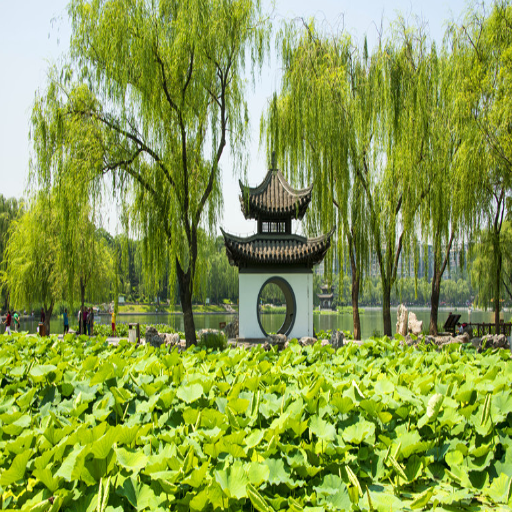
Royal Gardens and Kunming Lake: The Summer Palace
Located in Beijing is the Summer Palace, a region known for its breathtaking views and unique architecture. It is recognized as a UNESCO World Heritage site and is most famous for its Kunming Lake, which covers around 75% of the grounds and 2.9 square kilometers of imperial landscapes. Travelers can find beautiful royal gardens along the shores of the lake, which feature artifacts from the Chinese culture, such as the Long Corridor, the Marble Boat, and the Tower of Buddhist Incense, along with the services of the modern day.
Pond area: 2.9 square kilometers (water, including Kunming Lake 75%).
Different Structures: Marble Boat, Long Corridor (728 meters), Tower of Buddist Incense.
Facilities: Several hiking routes overlooking the lake and exquisite gardens.
Primary Importance: The emperor’s favorite holiday location boasts an exceptional combination of untouched nature, natural splendor, and the structures of the past.
The Summer Palace offers unparalleled relaxation for nature enthusiasts, while for cultural enthusiasts, the rich historical context will make it unprecedented in all of Beijing.
Beihai Park: One of the Oldest Imperial Parks in China
Located in central Beijing, Beihai Park is an ancient imperial garden that is over 1,000 years old. It covers about 68 hectares of land, and more than half of it is occupied by Beihai Lake. The park has several landmarks, most notably the White Dagoba Temple, the Nine-Dragon Screen, and the Circular Wall, which feature beautiful natural scenery and exquisite architecture.
Cultural Significance: Beihai Park was constructed during the Liao, Jin, Yuan, Ming, and Qing Dynasties as an area for the emperors to rest and enjoy recreational activities. As an imperial park, its design integrates Chinese gardening art and symbolization, which depicts traditional ideology.
Accessibility: The park is well accessible by foot, as there are paved paths that allow visitors to walk around the scenic lake and historic areas. Boats for rent on Beihai Lake are another option for viewing the park.
The magnificent confluence of cultural heritage and relaxing natural beauty makes Beihai Park an essential site for visitors seeking peace and historical information.
Beijing Zoo: Where The Giant Pandas and Other Rare Animals Are Found
Overview: Founded in 1906, The Beijing Zoo is one of the oldest zoological parks in China and is famous for its rich collection of rare and exotic animals, especially the giant pandas.
Notable Characteristics: The Zoo has more than 950 species of animals and dedicated enclosures for each species. One of the highlighted attractions is the panda house, which has a spacious living environment for the pandas. The zoo encompasses a 220-acre area with over 14,500 animals.
Accessibility: Located in the Xicheng District, the zoo can be accessed by bus or the subway. It also provides wheelchair-friendly paths for complete inclusivity.
Operational Hours and Admission Prices: The zoo operates every day from 7:30 a.m. to 5:00 p.m., adjusting to the seasons. Admission ranges between ¥15 and ¥19, but there is an additional fee for visiting the panda exhibit.
Where Can You Experience Beijing’s Cultural and Religious Sites?
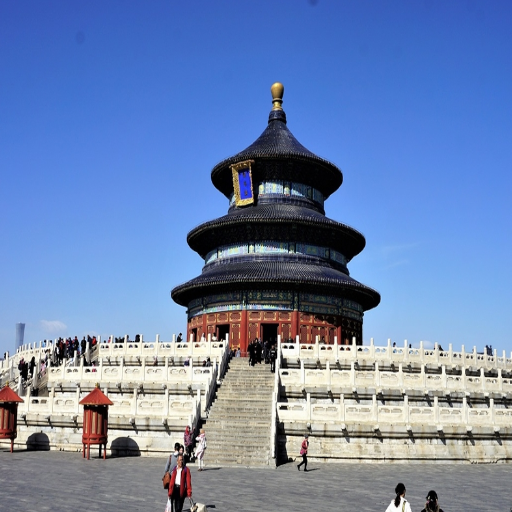
Lama Temple: The Most Popular Buddhist Temple In Beijing
Based on my knowledge, the Lama Temple, also referred to as Yonghe Temple, is an astonishing monument showcasing Beijing’s religious legacy as a city. This temple is an achievement of architectural and artistic magnificence, a cultural treasure, and a functioning site of Tibetan Buddhism. The temple is uniquely located in the northeast of the city, in the Dongcheng District. The intricate carvings and statues alongside the halls and courtyards are decorated with bright colors, and the eye-catching vibrant structures portray an atmosphere of magnificence whilst considerably providing respect for custom. The temple is a lively place to visit for people wishing to experience the rich culture and tradition of the Beijing people.
The Lama Temple has unique details that improve the visiting experience. The regular visiting hours are between 9 am and 4 pm every day, although there may be exceptions during different seasons. The cost of entry is ¥25, which is more than reasonable due to the value provided. Located next to Yonghegong Lama Temple Station, which is on lines 2 and 5, it is easily accessible by subway. The stunning atmosphere of the Temple can be enjoyed effortlessly by both visitors and residents.
The unique highlight of the Lama Temple is perhaps the most remarkable feature distinguishing it from other temples: the 26-meter-tall statue of Maitreya Buddha, carved from a single piece of sandalwood, which is famously recorded in the Guinness World Records. This statue alone makes a visit worth it and highlights the incredible artistic devotion of the craftsmen. Peters is asked to observe the dress code and conduct of the temple because many people come here for religious purposes. Whether you are interested in the spiritual side of Buddhism or the history and culture of China, the Lama Temple serves eclectic purposes for everyone’s experience.
Beijing Temple of Confucius: In Commemoration of the Greatest Philosopher in China
The most distinctive feature of the Beijing Temple of Confucius is its profound historical importance for the visit, being one of the temples specifically built to remember Confucius, one of the most critical thinkers in China. It is a glimpse of old China’s rich intellectual and cultural heritage. In my view, the most striking is the quiet and comfortable atmosphere, combined with the sophisticated craftsmanship of the temple. This serves as an insight into the teachings and values of Confucianism.
When reservations about the site’s technical aspects are removed, the arrangement of the temple and its components becomes clear. The complex covers an area of 22,000 square meters, incorporating significant parts such as Dacheng Hall, the principal ceremonial hall, and the stone steles that bear the Classic Confucian texts, which are set into aged and time-worn steles. Each of these is skillfully made and well preserved with the proper intent, representing the care and reverence for the Confucian systems. With good care and evident effort towards cleanliness, the authority and the Temple of Confucius in Beijing remain significant in history.
Chairman Mao Memorial Hall: Pay respects to a monument of modern Chinese history
Like all the other great leaders of China, Mao Zedong was a pivotal figure in the country’s modern history. His memory and contributions are commemorated through the Chairman Mao Memorial Hall at the heart of Tiananmen Square. The hall serves as a mausoleum while also functioning as a historical monument. Any tourist wishing to learn about the legacy of Mao Zedong are presented with exhibits including his leadership memorabilia, personal effects, and the marking feats of the Revolution. The main hall is home to a crystal coffin where his body rests, symbolizing his indelible mark on China’s ever-growing development.
Considering the relevant technical parameters, the preservation system in the hall employs modern refrigeration and humidity control techniques to create the best possible option for preserving the memorial. These methods are sensible because they guarantee that the environment is protected from deterioration and any harm to Mao’s remains or the hall. The allocation of visiting hours, along with appropriate queuing and security checking systems, is well organized so that all visitors can be cared for in a considerate manner with excellent efficiency. From my perspective, the visit was very informative and deeply touching because it gave me an opportunity to experience an event that greatly affected the contemporary history of China.
What Modern Attractions Should Be in Your Beijing Itinerary?
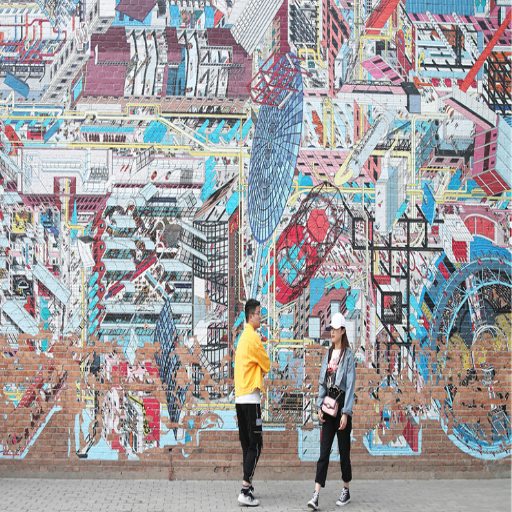
798 Art Zone: Center for Contemporary Art Beijing
It is imperative to recommend 798 Art Zone on a trip to Beijing due to its multifaceted importance as a modern art and cultural center. I personally enjoyed strolling around the modernist galleries that housed works from all over the world, sitting in beautifully constructed industrialism galleries in the repurposed factories. The district is a perfect fusion of heritage and contemporary society that provides marvelous exhibitions, art installations, and interactive zones.
From a more technical perspective, factors like opening hours (usually 10 AM to 6 PM) and ease of access (available via public transportation and taxi) significantly affect the efficiency of your visit. Moreover, most exhibitions are ticketed, with prices changing from event to event, so relative research is advisable. One more crucial point to plan is having enough time to visit the zone, around three to four hours, without feeling hurried. This zone is not to be ignored as it provides inspiration and a feast of the senses.
National Museum of China: The Largest Museum in the World
The National Museum of China was truly breathtaking for me, given that it is the largest museum in the world by floor area. It is located in Beijing at the eastern edge of Tiananmen Square and is estimated to be over 200 thousand square meters, which is truely gigantic. It was genuinely intriguing to find its collection of almost 1.4 million items, which span from prehistorical items to modern political artifacts. This set in stone how China has transformed across the eras. Quite irrefutably, this is the most important historical place to visit for anyone who wants to witness the glory of China.
While organizing my trip, I set aside sufficient time to appreciate its extensive exhibitions. The museum is divided into two primary collections, one for ancient China and the other for the modern history of China. I recommend spending at least half a day, or better yet, an entire day, so you can comfortably enjoy the museum without being time-constrained. On a side note, there is no entrance fee for me at the National Museum of China, although visitors need to reserve time slots online with their ID or passport, which is quite user-friendly and efficient. It is also important to mention that the museum has a stringent security policy that requires, for example, using metal detectors and baggage scans, so arriving a few minutes earlier may be beneficial.
I was particularly captivated by how the exhibits are organized and how modern display technologies and careful curation are incorporated into them. Many displays featured interactive elements that deepened the understanding of the related artifacts. For instance, the section with bronzeware and jade artifacts possesses additional information regarding the workmanship and the artifacts’ ceremonial use’s justification by archeological evidence. Similarly, the modern history section includes multimedia exhibits about China’s modern changes. In general, in addition to the immense size of the building, the National Museum of China is different from others in its dedication to putting education within reach; this is why it is so appealing to monger-sin who wish to learn in-depth about the diverse culture of China.
The Newest Entertainment Destination: Universal Beijing Resort
The resort stands out as a premier location for visitors of all ages because it offers an exciting fusion of entertainment and cultural immersion. These attractions seemed most advanced and unique to me. The Harry Potter zone, for instance, incorporates fantastic visual effects and magical storytelling that brings the theme to life. The resort also showcases distinct zones of Chinese design, demonstrating the resort’s incorporation of local and international concepts.
Incorporating trackless ride systems and augmented reality enhances the guest experience, justifying the technical parameters of the ride systems. In addition, reliability, immersion, and safety are vital elements in providing entertainment; these parameters ensure that it is world-class. Moreover, the layout design and the real-time monitoring of the queue systems improve crowd management at the park, which enhances convenience and comfort during peak seasons. In a nutshell, creativity combined with technology makes it possible to build a universal resort with the most modern features and sets a new standard for entertainment.=
Frequently Asked Questions (FAQs)
Q: Which places should first-time tourists check out when in Beijing?
A: First-time tourists to Beijing ought to visit the Forbidden City (the biggest palace complex in the world), the Great Wall, the Temple of Heaven, the Summer Palace with its lovely Longevity Hill, and Tiananmen Square. Yonghe Temple (Lama Temple) helps one understand the essence of worship in China. Shopping is best at Wangfujing Street, while modern Chinese culture is well represented in the 798 Art District. In these breathtaking tourist spots, tourists can capture the essence of China’s history, culture, and modern China at the same time.
Q: When is the ideal time of the year to visit Beijing for sightseeing?
A: The ideal time of the year to visit Beijing for sightseeing would be spring (April-May) and Autumn (September – October), as the weather is nicer, with clear skies and mild temperatures. Summer (June – August) is hot and very crowded due to domestic tourists, while the winder (November – March), which is cold, offers a different kind of experience, such as the Forbidden Palace covered in snow. Stay away from Chinese holidays such as Chinese New Year and the National Holidays in October, when tourist attractions in Beijing fill up with people from all over the country.
Q: What is the best way to schedule my time in Beijing so that I can visit the major tourist sites?
A: A good technique for planning trips is to cluster places geographically so that all sights of a particular area can be visited on the same day. In the case of Beijing’s major sights, one day could be assigned to the Forbidden City and Tiananmen Square, another day visiting the Temple of Heaven and the Summer Palace, and the Great Wall (preferably Mutianyu or Badaling sections) will require an entire day. For more cultural experiences, the Confucius Temple could be visited with Yonghe Temple and the Drum and Bell Towers. I recommend using the subway to get around the city. Also, do not forget to buy the Beijing Pass if you plan on visiting many attractions, as it will save you money on admission fees. If a tourist wants to see all the major sights without feeling rushed, it is recommended to allow 4-5 days.
Q: What are some less-known points of interest around Beijing worth visiting?
A: Besides the famous landmarks, most tourists visiting Beijing are unaware of its hidden treasures. The ancient observatory is the oldest in the world and has famous astronomical instruments from the Ming Dynasty. Jingshan Park is quieter and offers the most stunning views of the Forbidden City. Qianmen Street has traditional Ming Dynasty buildings but is much less busy than Wangfujing. Eastern Qing Tombs, the Marco Polo Bridge, and the Jinshanling Section of the Great Wall offer day trip options outside Beijing. Zhihua Temple has stunningly authentic Ming dynasty music performances away from the typically crowded tourist spots.
Q: How does Beijing compare to other major tourist destinations in China, such as Shanghai?
A: There is a noticeable contrast between the experiences of Beijing and Shanghai. Since Beijing is considered the cultural and political heart of China, it has the best historical attractions, including The Forbidden City, the Temple of Heaven, and the Great Wall, all of which symbolize China’s imperial architecture. The city offers a more traditional ambiance with hutongs (narrow alleys) and ancient old buildings. Conversely, Shanghai is the financial center of China and features modern skyscrapers, international shops, and a more diverse feel due to colonial influences. While Beijing has more to offer in terms of history and cultural traditions, Shanghai embodies China’s modern and globalized image.
Q: What are the best places to experience authentic Beijing culture beyond the major tourist attractions?
A: The hutong areas of Nanluoguxiang and Dashilar offer local street food, traditional courtyard homes, and authentic Beijing culture. Locals frequent the tea ceremony at Maliandao Tea Street or watch the Beijing Opera at Liyuan Theatre. Unique cultural artifacts can be found at the Panjiayuan Antique Market. Festivals provide a peek into local life with temple fairs and night markets, while the Water Cube and Bird’s Nest symbolize modern Beijing. For a deeper understanding, partaking in tai chi with residents in local parks is a must.
Q: Is it possible to sightsee around Beijing without speaking Chinese?
A: Yes, sightseeing around Beijing without speaking Chinese is certainly doable, although it helps to have a few phrases on hand. Beijing tourist sites have English signs, and staff members and audio guides often speak English. The subway system has English announcements and maps. Numerous restaurants in central tourist areas use picture menus or offer English translations. Communication with Chinese service providers can be done using Baidu Maps or translation apps. You might consider booking a tour with an English guide for complicated places like the Forbidden City. Many young Chinese people in these areas will happily speak English with you. Hotels can give customers a piece of paper with the place they wish to go written in Chinese characters for taxi drivers.
Q: What are some of the newly opened tourist sites in Beijing?
A: Beijing has incorporated various new fascinating attractions in the past few years. In 2021, Universal Studios Beijing opened its gates and became the city’s foremost theme par,k which features Chinese elements blended with the commonly known rides. The Beijing Daxing International Airport has modern architecture that makes it a tourist magnet. The National Museum of China now boasts renovated state-of-the-art exhibitions. Beijing’s 2022 Winter Olympic venues became a fad, especially in Yanqing District. Other than the 798 Art District in Beijing, UCCA Edge, and other new galleries have contributed to the contemporary art scene of Beijing. All these attractions show the advancement of modern China along with the traditional ones.
Q: What are the tips for getting the most out of my trip to the Forbidden City?
A: To get the most out of your visit to the Forbidden City, booking your tickets online and arriving as early as 0830 is advisable to avoid the crowds. A local tour guide or an audio guide might add value to your visit by explaining the halls of the emperors’ reign during the Ming and Qing dynasties. Detailed information regarding specific buildings is available on the official Palace Museum app. Ensure you visit the Clock Exhibition Hall, the Imperial Garden, and the Hall of Prayer for Good Harvests. Afterwards, Jingshan Park offers stunning views of the entire complex, which makes it a great visit. It is a good idea to brush up on some basic Chinese imperial history before your visit and set aside 3-4 hours to begin appreciating this palace complex’s sheer size.